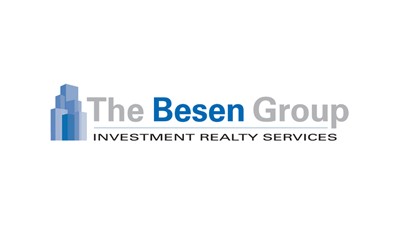Besen Is Bullish On This N.O.I. — That's Neighborhood Of Interest Astoria, Queens

Astoria’s landscape has recently benefited from an influx of development dollars and a frenzied flurry of activity aimed at providing migrant Millennials with in-demand housing and longtime residents with parks, schools and supermarkets.
Developers’ efforts are especially concentrated on the shoreline, transforming a desolate coast, characterized by barbed wire-protected industrial buildings, into something inviting and enjoyable.
Astoria is ethnically diverse, but has a particularly strong Greek presence, magnified by immigration resulting from Greece’s financial woes. Astoria retains the charm of old Brooklyn, with mom-and-pops dotting the landscape and a palpable familiarity felt among neighbors that engenders a true sense of community.
“Astoria is arguably the hottest neighborhood in Queens,” Besen Group associate Jason Strulowitz said. “Even within the geography there are different pockets that are burgeoning and assuming their own identity and personality.”

The Besen Group's Aaron Kline and Jason Strulowitz outside the Astoria Museum of Moving Image
Astoria has a more residential, suburban feel than Manhattan. It seems surprising, then, that Millennials comprise such a large share of the newest wave of residents to the neighborhood. Perhaps the digital natives are rebelling against the isolating effects of a technology or the peculiar New York sensation of feeling lonely in one of the most densely populated places on earth. Or maybe they are just looking for cheaper rents than they can find in Manhattan.
In any case, their arrival is driving demand, particularly in multifamily, increasing prices and catalyzing revitalization in a neighborhood that was marred by crime in the 1970s.
Last September, The Real Deal reported that a package of four properties Jared Kushner improved and took to market had an $85M price tag, a significant bump from the $51M he paid for the portfolio in 2015.
Astoria was the most actively traded submarket in Queens in 2016, according to Strulowitz, with 17 multifamily buildings sold and properties trading at a relatively high average of $470/SF.

Marine Terrace affordable housing complex
In June, Related Cos. purchased the seven-building Marine Terrace portfolio from Benjamin Properties for $121M. Related capped rents at this complex — composed of 444 multifamily units and representing a substantial portion of the limited supply of affordable housing — at $1,020 per month.
Now, the developer's focus seems to have shifted from affordable housing to market-rate projects that cater to Millennials.
“There’s some nice zoning around Astoria,” Strulowitz said. “A lot of developers are doing 15K to 30K SF projects because Millennials come here looking for a neighborhood feel rather than high-rises.”
This has encouraged developers to deliver three- to seven-floor buildings instead of 20-story high-rises.
“We’re also starting to see high-end, 10k SF projects that are modern, with Brooklyn-style architecture and conceptual design elements,” Strulowitz said.

The Durst Organization and Lincoln Equities' Halletts Point project in Astoria
Strulowitz also expects galleries and trendy retail to pop up as residents spill over from Brooklyn and establish themselves in the neighborhood. Astoria’s sculptures, contemporary art galleries and institutions, plus its reputation as a haven for budding cinematographers, contributes to the cool factor it is beginning to exude.
The zoning for building height drops approaching the Dutch Kills-Astoria line, so while the Long Island City area has high-rises, Astoria’s buildings are of more modest height.
“What piqued my interest is the number of new projects on the border,” Strulowitz said. "Some 421a-enabled projects sold for up to $300 per buildable SF, and non-421-a sites trading between $200/BSF and $225/BSF. Walk-up buildings are trading at cap rates around 4%.”

Breaking into this submarket has been challenging for outsiders, who find themselves stymied by indigenous Astorians who are long-term owners, Besen Group associate Aaron Kline said. He is currently under contract to sell a 27-unit walk-up on 29th Street for $11.4M, which translates to $422K/unit and $456/SF.
Those owners are familiar with the neighborhood and residents, have a track record of success, have seen the progression and have witnessed the growth of Astoria.
“Outsiders are then surprised to find they’re not getting the value they’d expected to receive outside Manhattan,” Kline said. Despite this, interest in Astoria is high and will likely build as the neighborhood continues to evolve. "The big boys have clearly woken up and jumped in with two feet here."
To learn more about this Bisnow content sponsor, click here.

